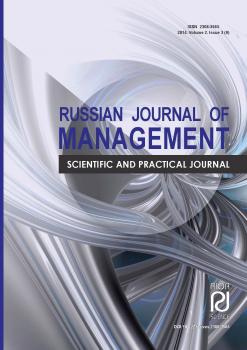The paper suggests some approaches to the solution of the problem of elaboration of regional energy systems’ environmental regulation. It shows that implication of clean energy standards or renewable portfolio standards leads to some ecology, economic and social consequences that can be evaluated properly only in the long term. The optimization of the technology structure regional energy system can be done on the base of Environmental Data Envelopment Analysis — the research technique which is following the concept of weak disposability of undesirable output (CO2 emissions). The analysis of the possibilities of the model extinction (by including different electricity generation technologies and other types of negative effects except CO2 emissions into account) is completed.
energy system, energy effectiveness, renewable energy, modelling, operational research
Согласно различным прогнозам как мировых аналитических агентств, так и крупнейших энергетических компаний (например, BP Energy Outlook 2030) потребление и производство электроэнергии в мире в ближайшие десятилетия будет возрастать (рис. 1), что связано с ростом населения планеты и нарастающим процессом индустриализации в развивающихся странах. К 2030 г. ожидается 50%-й рост производства и потребления электроэнергии относительно уровня 2011 г. (примерно по 2,1% ежегодно).
1. Brennan T., Palmer K., Martine S., Alternating Currents: Electricity Markets and Public Policy. Washington DC: RFF Press, 2002.
2. Brennan T.J., Palmer K.L. Energy efficiency resource standards: economic and policy. Utilities Policy, 2013, no 25, pp. 58-68.
3. Coffman M.G., Griffin J.P., Bernstein P. An assessment of greenhouse gas emissions-weighted clean energy standards. Energy Policy, 2012, no 45, pp. 122-132.
4. Ratner S.V., Almastyan N.A. Market and administrative methods of regulation of negative impact of energy facilities on the environment. Ekonomicheskiy analiz: teoriya i praktika [Economic analysis: theory and practice], 2015, no 16, p. 2-15.
5. Han L. The brief and wondrous life of solar energy development // The New Presence, 2015, April. URL: http://www.pritomnost.cz/en/economics
6. Färe R., Grosskopf S. Modelling undesirable factors in efficiency evaluation: comment. European Journal of Operational Research, 2004, no 157, p. 242-245.
7. Soushi S., Improvement restriction data envelopment analysis for new energy in Japan. Hokkai-Gakuen University, Department of Life Science and Technology, 2014.
8. Yiwen B., Ping H. Estimation of potential energy saving and carbon dioxide emission reduction in China based on an extended non-radial DEA approach. Energy Policy, 2013, no 63, pp. 962-971.
9. Zhou P., Ang B.W. Linear programming models for measuring economy-wide energy efficiency performance. Energy Policy, 2008, no 36, p. 2911-2916.
10. Lozano S., Gutiérrez E. Non-parametric frontier approach to modelling the relationships among population, GDP, energy consumption and CO2 emissions. Ecological Economics, 2008, no 66, p. 687-699.
11. Bian Y., Yang F. Resource and environment efficiency analysis of provinces in China: a DEA approach based on Shannon’s entropy. Energy Policy, 2010, no 38, p. 1909-1917.
12. Shi G., Bi J., Wang J. Chinese regional industrial energy efficiency evaluation based on a DEA model of fixing non-energy inputs. Energy Policy, 2010, no 38, pp. 6172-6179.














